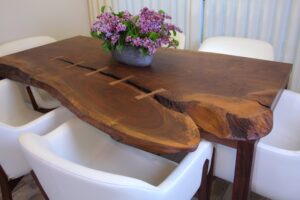This week’s reading was a topic I found intriguing, the term “Vibrancy of Matter” was a completely new concept to me. My understanding is that this philosophical concept argues against traditional views that we as humans are above everything else, instead proposing that all matter both human and non-human contains agency or “vibrancy”. The author proposes that this radical concept could alter the divide between humans and nature making us more interconnected with the natural world. (Bennet, J. 2010)
Essentially both human and non-human things are made up of an assemblage of “vibrant matter” that have multiple qualities and behaviours that impact our environment in ways we are not even aware of. An example of this is Electricity, while not a living entity it has many forms of “vibrancy” creating power for cities, homes & devices all things that we interact with daily, this in turn makes electricity an assemblage of “vibrant matter”. (Bennet, J. 2010)
In design we use many different types of materials such as stone, metal and wood, all of which have different properties and qualities. This concept challenges us as designers to view materials as an assemblage of “vibrant matter”, by doing this we develop a knowledgeable understanding of the history and life cycle of the material we are using. By understanding the vibrancy of the material matter designers are enabled to use them in a way that engages human connection with nature.
For example, if using wood, we can focus on the knots, cracks, patterns, smell and texture of the material throughout the design process. This is a way designers can embrace and highlight the natural characteristics of the material being used, giving us the knowledge to create a designed space where the material becomes part of the experience of the environment we have designed. This connects the user with a genuine relationship to nature through the material, establishing a deeper connection between humans and nature. Although the table below has been treated it is a great example of how viewing wood in its natural state really connects us with its life and where it has originated from.

Wooden Table Top (Barnard, S. 2024)
The use of these materials in its “vibrant form” encourages a genuine reflection of nature and the materials journey, rather than just viewing the material as part of a construction method. It changes our perception of the material from being something separate that has been treated, shaped and formed to build with to a material that connects us with its true self. This creates a more respectful understanding of the material, which puts human and non-human matter on an interconnected and equal level. Designers are then able to embrace the “vitality” of the material in a more responsive and organic manor that works in harmony with the natural environment, reducing the ecological damage to nature.
Bibliography:
Bennett, J. (2010) Vibrant matter: a political ecology of things. Durham, [N.C.], Duke University Press.
Images:
Barnard, S. (2024) Wood in Interiors: How to use natural wood in interior design, [Online image]. Available at: https://www.sarahbarnard.com/story/woodininteriors (Accessed on 30 October 2024).




